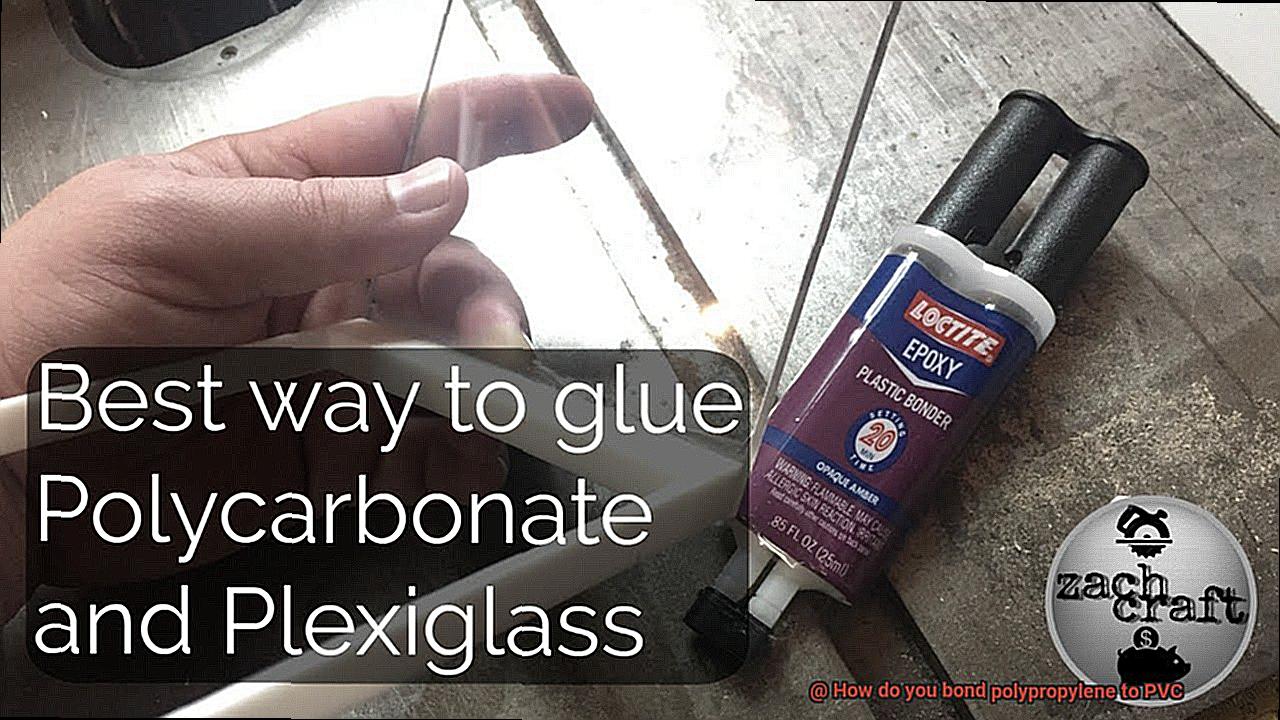Ever wondered how to bond polypropylene to PVC? Whether you’re tackling a DIY project or diving into a professional endeavor, mastering the art of bonding these two materials can unlock a world of possibilities. Polypropylene and PVC are common players in various applications, and knowing how to fuse them together effectively is a game-changer.
Bonding polypropylene to PVC isn’t a walk in the park. These materials have an inherent chemical resistance that makes bonding them a bit of a challenge. But fear not. There are methods you can employ to achieve a strong and reliable bond.
First things first, let’s prep those surfaces. Before anything else, give both the polypropylene and PVC surfaces a thorough cleaning with an appropriate cleaning agent. This step is crucial because it nixes any dirt, oil, or contaminants that could sabotage your bonding efforts.
Next up, roughen those surfaces like nobody’s business. Grab some sandpaper or a trusty file and lightly sand or score the polypropylene and PVC. The goal here is to create microscopic abrasions that amp up the surface area for adhesion.
Alright, now it’s time for the star of the show: adhesive. When it comes to bonding polypropylene to PVC, you’ll want to get your hands on specialized adhesive made just for this dynamic duo. A top pick is a two-component polyurethane adhesive that guarantees an ironclad bond.
Follow the manufacturer’s instructions like they’re gospel when mixing and applying the adhesive. Typically, you’ll need to blend the two components of the adhesive together and spread it onto both the polypropylene and PVC surfaces using whatever floats your boat—a brush, spatula, or squeeze bottle will do just fine.
Now comes the fun part—joining those bad boys together. Once you’ve slathered on the adhesive, press the polypropylene and PVC surfaces firmly against each other. You can use clamps, weights, or a trusty jig to keep them in place. The key is to maintain this pressure for the curing time recommended by the adhesive manufacturer.
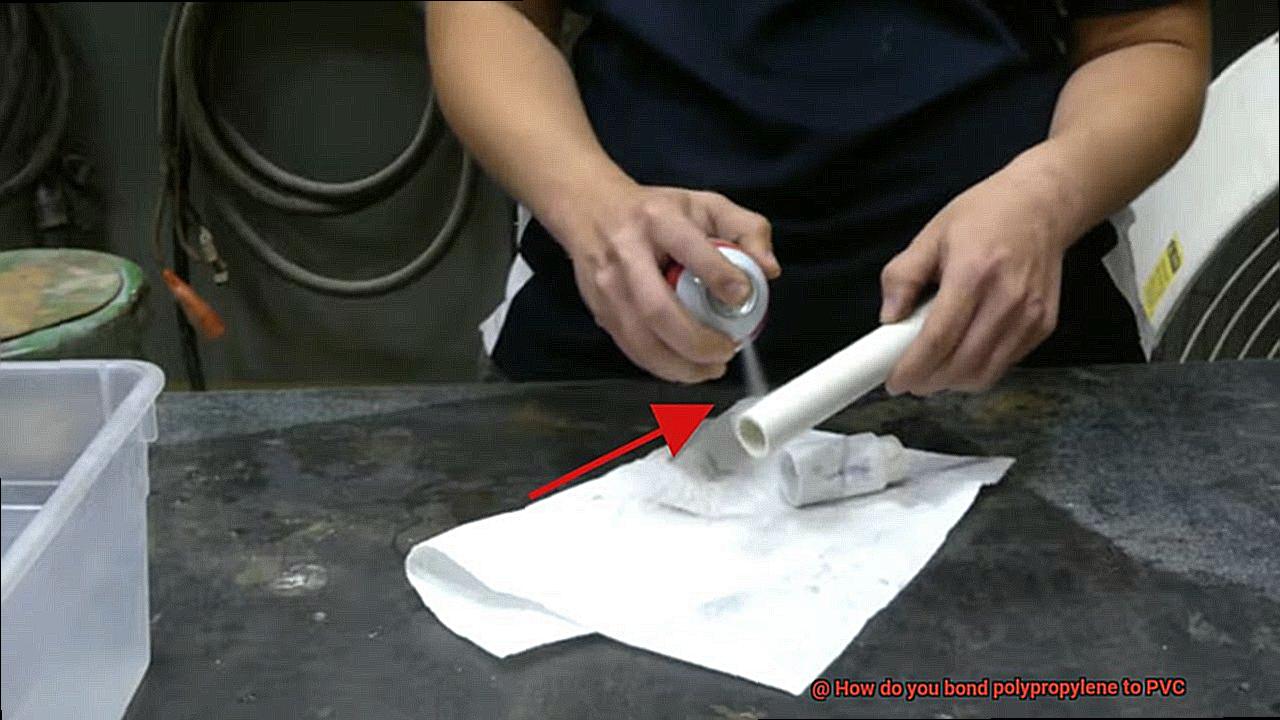
During the curing process, the adhesive works its magic and forms an unbreakable bond between the polypropylene and PVC. Depending on the adhesive you’re using, this can take anywhere from a few minutes to several hours. Just make sure you’ve created the perfect environment for curing by keeping temperature and humidity levels in check as per the manufacturer’s recommendations.
Once the curing time has elapsed, it’s showtime.
Understanding the Properties of Polypropylene and PVC
Contents
- 1 Understanding the Properties of Polypropylene and PVC
- 2 Bonding Polypropylene to PVC Using Adhesives
- 3 Preparing the Surfaces for Bonding
- 4 Applying the Adhesive
- 5 Curing the Adhesive
- 6 Bonding Polypropylene to PVC Using Heat Welding or Fusion Bonding
- 7 Equipment Required for Heat Welding
- 8 Factors Affecting Bond Strength
- 9 Conclusion
Polypropylene and PVC are thermoplastic materials widely used in various industries. Bonding these materials together can be challenging due to their unique properties. Understanding their chemical composition, physical characteristics, and adhesive compatibility is crucial for successful bonding. In this article, we will compare and contrast the properties of polypropylene and PVC, discussing their impact on the bonding process.
Properties of Polypropylene:
Polypropylene (PP) is a versatile plastic known for its high chemical resistance, low moisture absorption, and excellent tensile strength. With a high melting point, it can withstand high temperatures without deformation. However, polypropylene has a low surface energy, making it difficult to bond with other materials.
Properties of PVC:
Polyvinyl chloride (PVC) is a rigid plastic widely used in construction materials and pipes. It offers good electrical insulation properties, exceptional chemical resistance, and cost-effectiveness. PVC can be easily molded into various shapes and sizes, making it suitable for diverse applications.
Bonding Challenges:
The main challenge in bonding polypropylene to PVC lies in their surface characteristics. Polypropylene’s low surface energy hinders adhesion, while PVC’s higher surface energy allows for better bonding. Overcoming this challenge involves modifying the surface of polypropylene to increase its surface energy.
Surface Modification Techniques:
To enhance adhesion, various techniques can be employed to modify the surface of polypropylene. Flame treatment, corona treatment, or plasma treatment create micro-roughness on the surface of polypropylene, improving its ability to bond with other materials.
Choosing the Right Adhesive:
Selecting an adhesive compatible with both polypropylene and PVC is crucial for a strong and durable bond. Two-component epoxy adhesives are commonly used as they offer high strength and excellent chemical resistance. Following the manufacturer’s instructions carefully is essential when using epoxy adhesives.
Mechanical Fasteners:
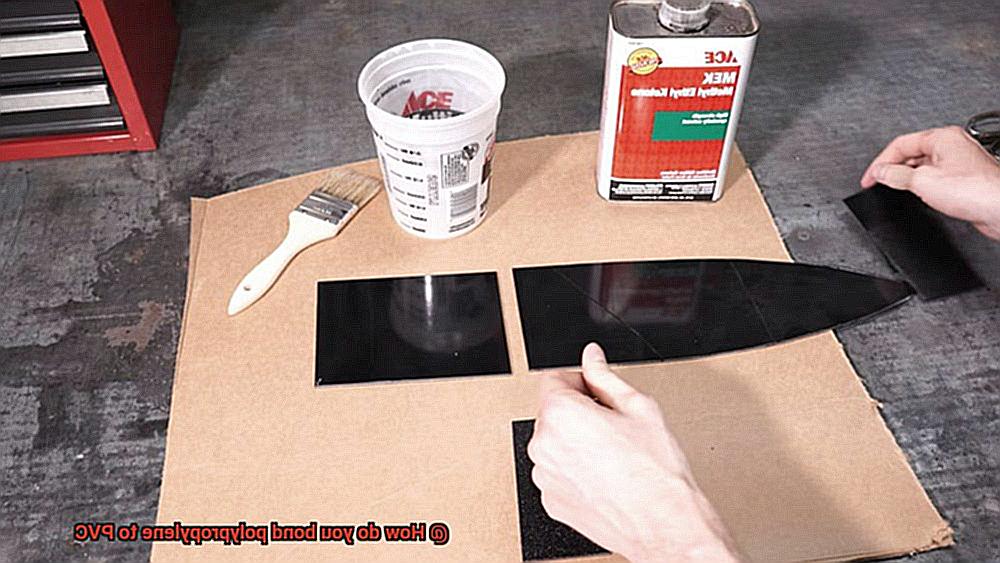
In some cases, using mechanical fasteners such as screws or rivets in combination with adhesive can reinforce the bond between polypropylene and PVC, especially in applications with high loads or vibrations.
Bonding Polypropylene to PVC Using Adhesives
Bonding polypropylene to PVC using adhesives may seem like an intimidating task, but with the right techniques and products, it can be accomplished successfully. Adhesives play a vital role in creating a strong and durable bond between these two materials, ensuring that they stay securely attached even under various stresses and loads.
When it comes to selecting an adhesive for bonding polypropylene to PVC, it is crucial to choose one that is specifically designed for these materials. Not all adhesives are compatible with polypropylene and PVC, so it is essential to use a product that is specially formulated for this purpose. Two-component epoxy adhesives are a popular choice due to their excellent bond strength and chemical resistance. These adhesives consist of a resin and a hardener, which must be mixed before application. Once applied, epoxy adhesives create a powerful bond that can withstand the test of time.
Another option for bonding polypropylene to PVC is using specialized polyurethane adhesives. These adhesives offer good flexibility and adhesion properties, making them suitable for bonding different types of plastics. However, it is important to ensure that the polyurethane adhesive you choose is specifically formulated for bonding polypropylene and PVC.
Before applying any adhesive, proper surface preparation is crucial. Both the polypropylene and PVC surfaces should be meticulously cleaned, dried, and free from contaminants such as dust, grease, or oils. Achieving the desired cleanliness may require using a solvent or cleaning solution specifically designed for these materials.
Once the surfaces are prepared, the adhesive can be applied following the manufacturer’s instructions. It is essential to apply the adhesive evenly and in the correct amount. Applying too little adhesive may result in a weak bond, while applying too much can lead to excess squeeze-out and potential messiness.
After applying the adhesive, firmly press the polypropylene and PVC materials together to ensure good contact and proper bonding. Clamps or other methods of applying pressure may be necessary to hold the materials in place while the adhesive cures. The curing time will depend on the specific adhesive and environmental conditions, so it is essential to allow sufficient time for the bond to fully develop.
While adhesives can provide a strong bond between polypropylene and PVC, it is important to consider factors such as surface preparation, adhesive selection, and application technique. Following the manufacturer’s instructions and conducting proper testing can help ensure the desired bond strength.
In some cases, using mechanical fasteners in addition to adhesives can provide added strength and stability. This is particularly useful when the bonded materials will be subjected to high loads or stresses.
Preparing the Surfaces for Bonding
Creating a strong and unbreakable bond between polypropylene and PVC is like discovering the perfect dance partner. With the right technique and adhesive, they can create a bond that withstands any challenge thrown their way. In this blog post, we’ll take you through the steps necessary to properly prepare these surfaces for bonding, ensuring a flawless connection that will have you in awe of their unbeatable chemistry.
Step 1: Cleanliness is Key
Start with a clean slate. Thoroughly clean both polypropylene and PVC surfaces using a mild detergent or solvent compatible with both materials. Wipe away dirt, dust, grease, or other contaminants with a clean cloth or sponge. This step ensures maximum adhesion and durability of the bond.
Step 2: Roughen Up the Surfaces
Create friction and connection. Gently roughen both surfaces using sandpaper or an abrasive pad. Increase their surface area and enhance adhesion. Remember, a slightly rough texture is all you need.
Step 3: Get Rid of Loose Particles
Brush off those last specks of dust. Remove any loose particles or debris resulting from the sanding process. Use a clean cloth or compressed air to ensure both surfaces are completely clean and free from any loose particles.
Step 4: Primer Time
Give them a little extra help to get in sync. Apply a primer or adhesion promoter specifically designed for bonding polypropylene to PVC. These products promote chemical bonding between the two materials. Follow the manufacturer’s instructions for even application on both surfaces.
Step 5: Let it Dry
Take a breather after an intense dance routine. Allow sufficient drying time for the primer or adhesion promoter as recommended by the manufacturer. This step ensures that the treated surfaces are ready for bonding.
Step 6: Temperature and Humidity Considerations
Create the right environment for a flawless performance. Maintain a controlled environment with a temperature range of 65°F to 75°F (18°C to 24°C) and a relative humidity of 40% to 60%. Extreme temperatures or high humidity can negatively affect the bonding process and final bond strength.
Applying the Adhesive
Now that we’ve covered the importance of selecting the right adhesive and preparing the surfaces, let’s dive into the exciting part – applying the adhesive. Get ready to witness the magic of bonding polypropylene and PVC surfaces together.
- Step 1: Choose your weapon – adhesive selection is key. Look for adhesives specifically designed for bonding polypropylene and PVC. Consider options like cyanoacrylate-based or epoxy-based adhesives. Make sure to choose one that is compatible with both materials to ensure a strong bond.
- Step 2: Cleanliness is next to stickiness. Before applying the adhesive, give those surfaces a good clean. Remove any dirt, grease, or contaminants using a solvent or cleaning agent recommended by the adhesive manufacturer. Remember, a clean surface is crucial for a successful bond.
- Step 3: Roughen it up. To enhance bond strength, lightly sand both the polypropylene and PVC surfaces with fine-grit sandpaper or use a solvent to create a roughened texture. This roughening process provides more surface area for the adhesive to grip onto, resulting in a stronger bond.
- Step 4: Time to get sticky. Apply the adhesive evenly to both surfaces using a brush, applicator, or syringe – whichever is recommended by the adhesive manufacturer. Follow their instructions carefully regarding application technique and the amount of adhesive required.
- Step 5: Bring them together. Immediately after applying the adhesive, carefully join the polypropylene and PVC surfaces together. Apply pressure to ensure a strong bond. Depending on the size and shape of the objects, you can use clamps or other methods to apply pressure evenly.
- Step 6: Patience is a virtue. Allow the adhesive to cure according to the manufacturer’s instructions. Avoid disturbing or stressing the bond during this curing period to achieve optimal bonding strength. Remember, good things come to those who wait.
- Step 7: Clean up your act. Once the adhesive has fully cured, remove any excess adhesive using a suitable solvent or by carefully scraping it off. Be gentle to avoid damaging the bonded surfaces.
- Step 8: Test it out. Before subjecting the bond to any load or stress, perform a strength test. Apply a controlled force to the bonded surfaces and check for signs of separation or failure. If the bond is not strong enough, consider applying additional adhesive or exploring alternative bonding methods.
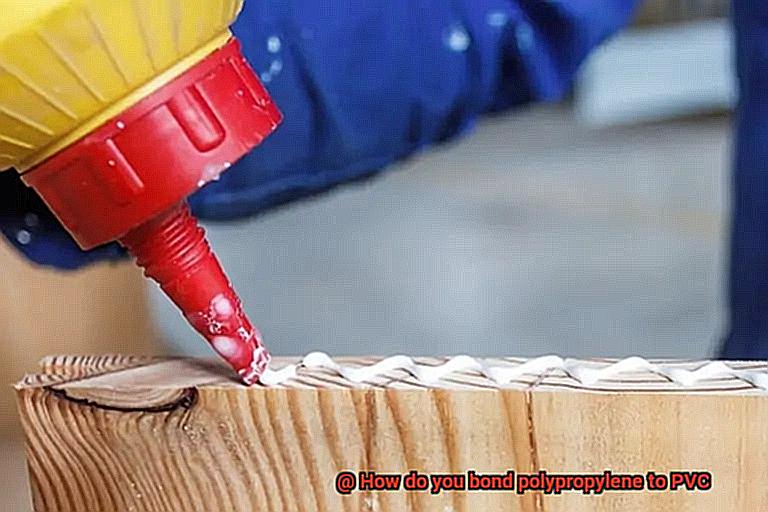
You’ve successfully applied the adhesive and created a strong bond between polypropylene and PVC surfaces. Now you can confidently use your glued pieces in various applications, knowing they’ll stay together for the long haul.
Remember, practice makes perfect when it comes to adhesive application. Don’t be afraid to experiment and fine-tune your technique. With each successful bond, you’ll become an expert in the art of gluing different materials together. So go forth and glue with confidence.
Curing the Adhesive
Get ready to dive into the captivating realm of curing adhesives when bonding polypropylene to PVC. If you’ve ever wondered how to create a strong and long-lasting connection between these two materials, you’re in for a glue-tastic journey. So grab your lab coat and let’s master the art of curing adhesives.
Unlocking the Power of Curing:
Curing is the final touch that elevates adhesive bonding to perfection. It allows the adhesive to reach its maximum strength, ensuring a durable connection. Patience is key, as we let nature work its magic.
The Importance of Time:
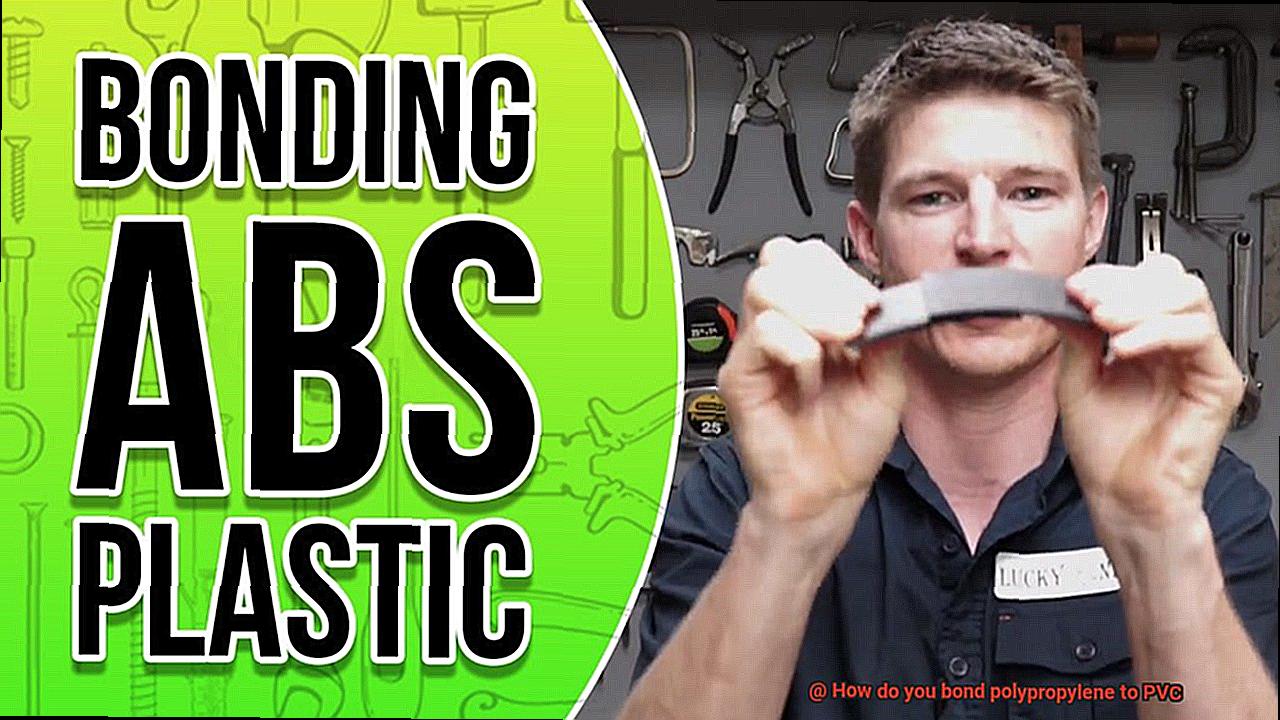
Different adhesives have varying curing times, making it essential to follow the manufacturer’s instructions meticulously. Rushing this process can compromise the bond. Allow the adhesive to dry and set at room temperature for the recommended duration.
Creating the Ideal Environment:
To achieve optimal curing, control factors such as humidity, temperature, and air circulation. A controlled setting creates the perfect stage for the adhesive to perform at its best, guaranteeing a reliable bond.
Specialized Techniques for Faster Curing:
Certain adhesives may require additional steps or equipment to expedite the curing process. Ultraviolet (UV) light exposure or heat application can accelerate bonding. Always refer to the product instructions for any unique requirements.
Unveiling a Flawless Bond:
Once cured, inspect your bond like a seasoned adhesive detective. Look for firmness, security, and zero visible gaps or weaknesses. Address any issues promptly before proceeding.
Choosing the Right Adhesive:
Remember, not all adhesives are created equal. When bonding polypropylene to PVC, select an adhesive specifically designed for this purpose. Following the manufacturer’s recommendations is crucial for optimal results.
Bonding Polypropylene to PVC Using Heat Welding or Fusion Bonding
When it comes to bonding polypropylene to PVC, heat welding or fusion bonding are two effective methods. Heat welding involves melting the surfaces of the polypropylene and PVC using a hot air gun or heated tool, allowing them to fuse together. Fusion bonding, on the other hand, utilizes a solvent or adhesive specifically designed for bonding polypropylene and PVC.
To ensure a successful bond, it is crucial to start with clean surfaces. Remove any contaminants like dirt, grease, or moisture using a cleaning agent recommended by the manufacturer. Once the surfaces are clean, roughen them with sandpaper or an abrasive material to increase the surface area for adhesion.
If you’re using heat welding, carefully heat the surfaces until they start to melt. Then, press them together firmly to fuse them. Fusion bonding requires applying the solvent or adhesive to one surface and joining it with the other surface. Follow the manufacturer’s instructions for specific drying times and application methods.
Safety is paramount during this process. Always work in a well-ventilated area to avoid inhaling any fumes released during melting.
After bonding, allow sufficient time for the bond to fully cure before subjecting it to stress or load. The curing time can vary depending on factors like material type and application method, so it’s important to check the manufacturer’s recommendations.
To ensure reliability, test the strength of the bond before using the materials in critical applications. This will give you confidence that the bond can withstand the intended use.
Equipment Required for Heat Welding
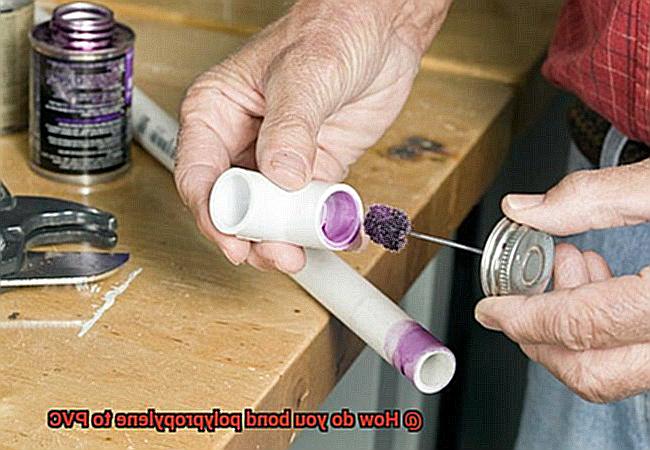
Heat welding, the powerful technique that brings plastic materials together, requires a range of equipment to achieve the perfect bond. Picture yourself as a hero, equipped with the tools needed for an epic bonding adventure.
First and foremost, the heat gun or hot air welder takes center stage. This superhero-like device releases a stream of adjustable hot air, much like Iron Man’s suit produces energy beams. It’s crucial to find the right temperature balance, heating the materials to create a strong bond without causing damage or warping.
But every hero needs a sidekick, and in heat welding, that role is filled by the welding rod. This rod is made from the same material as the polypropylene and PVC being joined. Acting as a filler material, it seamlessly strengthens our bond, just like Robin supports Batman in their heroic endeavors.
Of course, we can’t forget about pressure application. Enter the handheld roller or pressure roller. With this tool in hand, you harness Hulk-like strength to ensure melted plastics fuse together evenly and securely. No air pockets or gaps will escape your watchful eye.
To keep everything aligned and secure during the bonding process, a stable work surface and clamps come to the rescue. These loyal sidekicks hold materials firmly in place while they’re heated and fused together. Nothing can shake their unwavering support.
But heroes must prioritize safety above all else. Just like any superhero worth their salt, gloves and protective eyewear are essential for protecting against high temperatures and potential hazards. Safety always comes first for our fearless heroes.
Factors Affecting Bond Strength
Today, we embark on an exciting journey to uncover the secrets behind achieving a strong and lasting bond between polypropylene (PP) and polyvinyl chloride (PVC). Get ready to don your superhero cape as we dive into the factors that affect the bond strength between these two materials. Let’s get started.
Surface Preparation: The First Line of Defense
Just like Batman meticulously plans his every move, proper surface preparation is crucial for a successful bond. PP and PVC have low surface energy, making them notoriously difficult to bond. To overcome this challenge, ensure that both surfaces are clean and free from contaminants like dust, grease, or oils. A trusty solvent like isopropyl alcohol can come to your rescue here. Additionally, roughening the surfaces through abrasion or chemical etching boosts adhesion by increasing the available surface area for bonding.
Adhesive Selection: Choosing Your Weapon
Selecting the right adhesive is akin to choosing the perfect weapon for battle. Traditional adhesives might not be up to the task due to the low surface energy of PP and PVC. Fear not. Specialized adhesives formulated for bonding low-surface-energy plastics like PP and PVC are here to save the day. These adhesives often contain primers or surface activators that promote adhesion specifically with these materials.
Adhesive Application: The Art of Perfect Coverage
Just as every brushstroke counts in a masterpiece, the method of applying the adhesive plays a vital role in achieving a strong bond. Follow the manufacturer’s instructions regarding application techniques and curing time. Employing a brush or roller ensures even coverage over the surfaces, maximizing bond strength. Remember, patience is key. Allow sufficient curing time for the adhesive to unleash its full bonding potential.
Temperature and Humidity: Mother Nature’s Influence
Mother Nature can be a powerful ally or formidable foe in the bonding process. Temperature and humidity impact the curing process and overall bond strength. Stay on the manufacturer’s good side by adhering to their recommended temperature and humidity range for optimal bonding. Extreme temperatures or high humidity levels could weaken the bond, so tread carefully.
Mechanical Stress: Preparing for the Ultimate Test
Every hero must anticipate the challenges that lie ahead. Consider the type and magnitude of mechanical stress your bonded PP and PVC joint will face. Choose an adhesive and bonding method that can withstand the anticipated stress levels, be it shear, tension, compression, flexing, or impact. By doing so, you ensure your bond stands strong against any test.
O_t-JRQ6MSA” >
Conclusion
When it comes to bonding polypropylene to PVC, there are a few methods you can try.
One option is using a special adhesive that is designed to bond these two materials together. These adhesives are typically made with a combination of chemicals that create a strong and durable bond.
Another method is using heat welding, where the two materials are heated and fused together. This technique requires precision and skill, but it can result in a seamless and long-lasting bond.
However, it’s important to note that the success of these methods depends on factors such as surface preparation, material compatibility, and proper application techniques.

